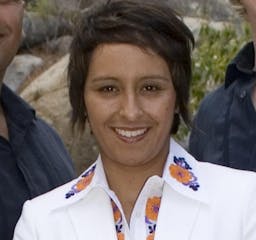What’s up with the Bottom of the Pyramid?
Jan 21, 2015
Story
What’s up with the Bottom of the Pyramid?
The more I work for World Pulse the more I have a growing unease and discomfort around the terminology “bottom of the pyramid.” Five years ago in business school I thought the mention of poverty in a business program was so progressive and so cutting edge. I was so honored to work with one of the greatest business management thinkers to bring this to the forefront in our discipline and into the social circles of the CEOs globally. In the book I contributed to called The Fortune at the Bottom of the Pyramid: Fighting Poverty though Profit, the premise was basically that the business sector has a strong and viable role in poverty alleviation. This term and it’s less fortunate acronym, BOP, were not meant to be a pejorative terms whatsoever—the pyramid clearly and neatly illustrates the fact that there are 4 billion people who make up half the world’s population and are an underserved market.
Many economists argue that these would-be consumers are the next wave of not only productivity and innovation but also of markets for our domestic products and services. The ironic thing, here, is once you’re a consumer in some countries, this may give you more worth and identity in the eyes of a company than that of your own government—but that’s another can of worms. So as a business student, if the moral imperative of fighting poverty doesn’t get you, the profit motive should.
Now that I’ve gotten some distance from that time in my life, I think I can articulate why the terminology bothers me. It’s not just that it reminds me of the term “scraping the bottom of the barrel” or if that’s it, it’s only half it. The fact that a pyramid is a perfect representation of global income disparity is the upsetting part for me I realize. Both allude to the indignity of poverty.
But to make things worse, picture another geometrical shape next to this pyramid. Start by turning it upside down and extending it’s apex downward like the needle of a toy top. This stemless top represents the world’s assets —this is the other half of the image that is less seen and talked about. You may come up with a different image when you read the following:
The richest 1% of adults owned 40% of the world’s total assets in the year 2000. The richest 10% of adults accounted for 85% of total assets. The bottom half of the world adult population owned 1% of global wealth. (Source: World Institute for Development Economics Research, The World Distribution of Household Wealth, 2006).
Me, I prefer the shape of a soccer ball—or as most of the world sees it: a football-- because of what appears to be interlinking networks of nodes and every one is connected to the rest; black and white living in perfect balance (yin and yang).
So what? So if these are the facts, I think we’re all about either accepting the world the way it is—completely topsey turvey and unbalanced-- or we work toward making the world into what it should be and could be. So that’s my point for today: not to give in to what is, but to work toward what the world could be— a football.




